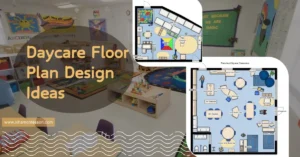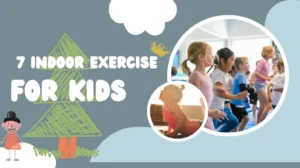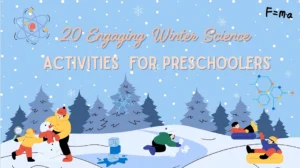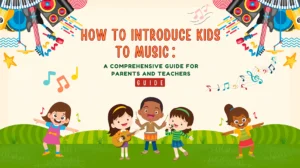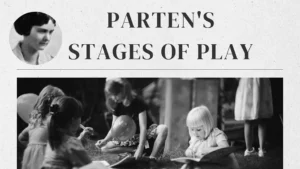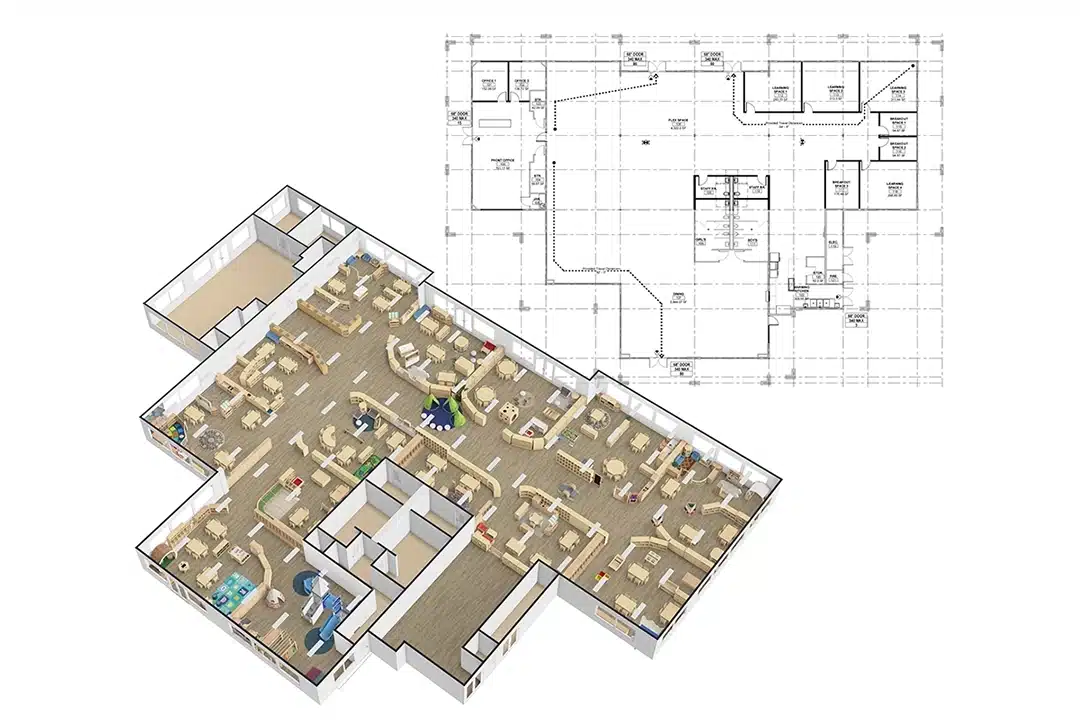Introduction
In today’s education systems, biology is frequently seen as a subject reserved for older students, taught through textbooks and abstract concepts. This detachment from hands-on learning leaves young learners disconnected from life’s wonders. Without fostering curiosity early on, we risk creating a generation that lacks a deeper understanding of the natural world and its interconnectedness.
Maria Montessori, the visionary behind the Montessori method, recognized biology’s profound role in shaping a child’s understanding of their environment. Her biological perspective emphasized the need to introduce children to the study of life early through observation, experimentation, and exploration. This approach ensures that biology is not just a subject but a bridge between the child and the natural world. Unfortunately, many traditional classrooms fail to embrace Montessori’s vision, resulting in a gap in holistic development.
The Montessori method transforms biology education by integrating Maria Montessori’s theory of biological perspective into practical learning experiences. Using carefully designed Montessori biology materials, children engage in tactile and visual exploration, such as studying plant life cycles, animal habitats, and the interdependence of ecosystems. This unique approach nurtures curiosity and aligns with Montessori’s belief that biology is essential for understanding life’s interconnectedness, laying the foundation for future scientific thinking.

What is Montessori Biology?
Biology holds a special place in Montessori education. It isn’t merely a subject; it’s an opportunity to connect children with the world around them, fostering an innate curiosity about life. In the Montessori classroom, biology helps children understand the intricate relationships between living beings and their environments. Whether it’s observing how a plant grows or learning about animal habitats, this hands-on approach creates a sense of wonder and respect for nature.
Maria Montessori believed that education should align with a child’s natural interests. This is where biology becomes more than a science—a medium to inspire lifelong learning. By guiding children to explore the world of plants, animals, and ecosystems early, Montessori biology nurtures a deep connection with life and emphasizes the importance of preserving nature.
Beyond sparking curiosity, Montessori biology lays the groundwork for critical thinking. Through tactile materials and interactive experiences, children begin to see the patterns and cycles of life. This fundamental understanding of biology enriches their knowledge and shapes their values, teaching them to care for the environment and all living beings.
Core Principles of Montessori Biology
1. Hands-on learning and observation
At the heart of Montessori biology lies the principle of learning through doing. Children are encouraged to explore with their hands, whether dissecting a flower, observing the texture of leaves, or examining insects in their natural habitat. These experiences are paired with focused observation, enabling children to engage their senses and develop a more profound understanding of the natural world.
2. Integrating education with nature
In the Montessori method, education goes beyond the classroom. Nature becomes an extension of learning. Activities like gardening, nature walks, and studying ecosystems bring biology to life, making it tangible and meaningful. Maria Montessori believed that by immersing children in nature, they would develop a sense of responsibility toward the environment, seeing themselves as part of the more extensive ecological system.
3. Emphasis on the interconnectedness of living things and ecosystems
A unique aspect of Montessori biology is its focus on the interdependence of life. Children learn that no living being exists in isolation. By studying food chains, life cycles, and ecological systems, they gain a holistic perspective on how organisms interact and rely on one another for survival. This principle helps instill a sense of empathy and respect for all forms of life.
Connection Between Montessori and Science
Montessori education has always emphasized the importance of connecting children with the natural world, and science lies at the very core of this philosophy. Maria Montessori believed that understanding the laws of nature helps children make sense of the environment they live in. By integrating science into education, children are learning facts and developing a sense of curiosity and respect for life.
One of the key distinctions of the Montessori approach is the philosophy of science it upholds. Unlike traditional methods that rely on rote memorization and theoretical explanations, Montessori classrooms encourage hands-on, experiential learning. For example, rather than simply reading about the water cycle, children may create models, observe evaporation, or study rain patterns during outdoor activities. This tactile connection transforms abstract concepts into meaningful discoveries.
Another significant aspect is how biology and science are seamlessly woven into everyday lessons. In a Montessori classroom, science isn’t a separate subject but a natural extension of everything the child interacts with. For instance, when exploring plant biology, children might learn about photosynthesis, the parts of a leaf, and even the ecological impact of deforestation—all within the context of a single project. This holistic integration ensures that science is educational but also practical and engaging.
Types of Montessori Biology
Montessori biology is a vital part of the Montessori curriculum, designed to help children connect with the natural world and understand the complex relationships that sustain life. It is divided into five main categories, each offering a unique perspective on the study of life. Through practical activities, observations, and guided exploration, children sincerely appreciate living organisms and their roles in ecosystems.
1. Botany
Plant biology introduces children to the fascinating world of flora. Through hands-on activities like planting seeds, observing how roots grow, and identifying the parts of a flower, children learn plant life cycles and classifications. For instance, they may study herbs, shrubs, and trees, noting their unique characteristics. Gardening activities deepen their connection with nature and teach responsibility as they care for living organisms.
- Exploring Plant Parts
Children use materials such as nomenclature cards, puzzles, and real-life specimens to learn about roots, stems, leaves, flowers, and seeds. For example, a hands-on activity might involve dissecting a flower to observe its parts, such as petals, pistils, and stamens. This tactile experience makes the learning process engaging and memorable. - Observing Plant Life Cycles
Children plant seeds and care for them, observing how they grow into seedlings and then mature into fully grown plants. They document each stage of development, fostering a sense of responsibility and patience. For instance, planting fast-growing seeds like beans allows children to see results within days, keeping them motivated and engaged. - Classifying Plants
Teachers guide children in classifying plants based on their characteristics. For example, they may categorize plants into herbs, shrubs, and trees or group them based on their habitats, such as aquatic or desert plants. This teaches children how to organize and analyze information critically. - Gardening and Outdoor Observations
Gardening activities help children connect with nature directly. They learn how plants need sunlight, water, and nutrients to thrive. Outdoor walks enhance this learning as children identify local plants, observe their habitats, and discuss their ecological importance. These activities encourage mindfulness and a deeper connection to the environment.


2. Animal Biology
Animal biology focuses on helping children understand the diversity and complexity of the animal kingdom. Children explore the differences between vertebrates and invertebrates, study the habitats of various species, and learn about food chains. Activities like observing animals in their natural environment or matching animals to their ecosystems foster knowledge and empathy toward other living beings.
- Understanding Vertebrates and Invertebrates
Children classify animals like mammals, birds, reptiles, amphibians, fish (vertebrates), and insects, mollusks, or worms (invertebrates). They learn about each group’s defining features using classification charts or sorting cards. For instance, children might compare the skeleton of a fish to that of a bird to understand the concept of vertebrae. - Animal Behavior and Habitats
Lessons encourage children to explore how animals adapt to their environments. For example, a teacher might discuss polar bears and their adaptations to cold climates, such as thick fur and fat layers. These lessons can be supplemented with videos, nature walks, or trips to zoos and aquariums. - Food Chains and Ecosystems
Children explore the relationships between animals through food chains and webs. A practical activity might involve creating a food chain diagram, starting with plants (producers) and including herbivores, carnivores, and decomposers. This helps children see the interdependence of all living beings in maintaining ecological balance. - Fostering Empathy for Animals
Through observation and care activities, children develop empathy for living creatures. For example, they may care for classroom pets like fish or hamsters, learning about their needs and behaviors.


3. Human Biology
Human biology allows children to explore their bodies and how they function. They might study parts of the human anatomy, such as the skeletal system, muscles, or organs, using visual aids like charts or 3D models. Hygiene and health lessons are also essential to this category, teaching children about self-care and the importance of maintaining a healthy lifestyle.
- Exploring Anatomy
Using anatomy puzzles, 3D models, or visual charts, children study the human skeletal system, muscles, organs, and functions. For instance, they might piece together a skeleton puzzle to understand the structure of the human body or label organs on a chart to learn about the digestive or circulatory systems. - Health and Hygiene
Lessons focus on personal health and hygiene. Children learn about regular exercise, balanced nutrition, and maintaining cleanliness. Simple activities, such as brushing a model of teeth or identifying healthy foods from pictures, encourage good habits from an early age. - Understanding Human Development
Children are introduced to the stages of human growth, from infancy to adulthood. Using visual aids like timelines, they learn how their bodies and capabilities change over time. This helps them develop self-awareness and understand the natural progression of life.


4. Ecological Biology
This branch focuses on the interconnectedness of life and the importance of ecosystems. Children learn about environmental cycles, such as the water and carbon cycles, and how humans play a role in maintaining ecological balance. Conservation projects and discussions about sustainability are often integrated into this part of the curriculum, inspiring children to become responsible global citizens.
- Studying Ecosystems
Children explore different ecosystems, such as forests, oceans, and deserts, learning about the plants and animals that inhabit them. Teachers might create dioramas or take children on nature walks to observe these ecosystems firsthand. - Understanding Natural Cycles
- Lessons on cycles like the water cycle, carbon cycle, or nitrogen cycle help children understand how nature maintains balance. For instance, a hands-on experiment might involve observing how water evaporates and condenses, teaching children about the water cycle in an interactive way.
- Interdependence in Nature
Activities such as creating food web diagrams demonstrate how all living beings rely on one another for survival. For example, children might map out how bees help pollinate flowers, leading to the growth of fruits and seeds that animals and humans consume. - Conservation and Sustainability
Children learn about protecting the environment through discussions on recycling, reducing waste, and conserving water. Projects such as planting trees or cleaning up local parks encourage children to take actionable steps toward sustainability.

5. Microscopic Biology
Microscopic biology introduces children to the unseen world of microorganisms. They observe cells, bacteria, and fungi using simple microscopes, learning about their roles in ecosystems. These activities help children appreciate the smaller components of life and their significant impact on the environment.
- Learning About Microorganisms
Lessons focus on bacteria, fungi, and other microorganisms, teaching children about their roles in decomposition and soil enrichment processes. For example, children might discuss how composting uses microorganisms to break down organic matter into nutrient-rich soil. - Using Microscopes
Children are introduced to basic microscope skills. They observe cells, bacteria, or pond water samples, gaining firsthand experience with the microscopic world. Teachers might guide them in sketching what they see under the microscope, helping them develop observational skills. - Connecting Microbiology to Everyday Life
Children learn how microorganisms impact their daily lives, such as how bacteria aid digestion or how yeast helps bread rise. These lessons make microbiology practical and relatable.

Montessori education equips children with a comprehensive understanding of life by exploring these five categories- plant, animal, human, ecological, ecological, and microscopic biology. Each category offers opportunities for hands-on learning, critical thinking, and a deep appreciation for the interconnectedness of all living things. These lessons build scientific knowledge and inspire children to care for the environment and live harmoniously with nature.
Core Content in Montessori Biology Education
Montessori biology education focuses on providing children with a clear understanding of essential biological concepts. These core topics are designed to help children explore the diversity of life and its interconnected systems.
1. Taxonomy: Plants, Animals, and Microorganisms
Children learn to classify living organisms, such as plants, animals, and microorganisms. This foundational topic helps them recognize patterns and organize information meaningfully.
- They explore categories like vertebrates vs. invertebrates and plant classifications such as trees, shrubs, and herbs.
- This core concept builds their ability to understand the relationships between different species and ecosystems.
2. Observing Animal Behavior
Observation is integral to Montessori biology. Children are encouraged to study how animals interact with their environments, learning about habitats, feeding habits, and movement.
- Children develop empathy and a deeper appreciation for wildlife by observing animals directly.
- These lessons help them understand how animal behavior influences the balance of ecosystems.
3. Evolution and Natural Selection
Evolution is introduced age-appropriately, focusing on adaptations and survival mechanisms in different species.
- Children explore examples like camouflage development in insects or bird beaks’ evolution suited to specific diets.
- Lessons on natural selection help them understand how species evolve to survive and thrive in changing environments.
Tools and Methods for Teaching Biology
Montessori biology education emphasizes hands-on learning supported by specialized tools and materials. These materials help children engage with biological concepts interactively and practically, enhancing both their understanding and curiosity.
1. Biology Nomenclature Cards
Biology nomenclature cards are an essential Montessori tool, providing a structured way for children to learn biological terms and concepts.
- Materials Used:
- The cards include images, labels, and descriptions for plant parts, animal classifications, and microorganisms. For instance, a set of cards for “Parts of a Flower” may include terms like “petal,” “stamen,” and “pistil,” along with corresponding illustrations.
- How They’re Used:
- Children match cards during three-part lessons: matching the picture to the term, then to the description. This activity reinforces vocabulary and comprehension.
- Benefits:
- These cards provide a tactile and visual way to learn, making abstract concepts more accessible and memorable.


2. Visual Timelines and Charts
Timelines and charts offer children a visual representation of complex processes, helping them understand the progression of life and ecological systems.
- Materials Used:
- Timeline of Life: A long, interactive chart that shows the evolution of life from single-celled organisms to modern species.
- Food Web Diagrams: Visual charts depicting the ecosystem’s relationships between producers, consumers, and decomposers.
- How They’re Used:
- The Timeline of Life allows children to “walk” through the history of life on Earth, learning about major evolutionary milestones. Food web diagrams help them understand how energy flows within ecosystems.
- Benefits:
- These tools make large-scale concepts like evolution or energy transfer easier to grasp while building a sense of scale and interdependence.


3. Outdoor Exploration Activities
Outdoor activities are essential to Montessori biology, providing children with direct natural experiences.
- Materials Used:
- Magnifying Glasses: For close-up observations of leaves, insects, or soil.
- Field Journals: For children to document their observations through drawings or notes.
- Identification Guides: Books or laminated cards that help children identify plants, insects, and other organisms.
- How They’re Used:
During a nature walk, children might collect leaves, observe insects, or listen to bird calls. Afterward, they use magnifying glasses to study their findings more closely and record their observations in journals. - Benefits:
These activities foster curiosity and help children connect their classroom learning with the real world. They also encourage mindfulness and respect for the environment.


4. Microscope and Observation Tools
Microscopes introduce children to the microscopic world, helping them discover life forms that are invisible to the naked eye.
- Materials Used:
- Simple Microscopes: For observing cells, bacteria, or pond water organisms.
- Prepared Slides: Featuring samples like plant cells or insect wings.
- Blank Slides: For children to collect and examine their own specimens.
- How They’re Used:
Children use microscopes to observe prepared slides, such as plant cells, and compare them to what they see in their own collected samples. For example, a child might examine a drop of pond water and discover microorganisms like algae or protozoa. - Benefits:
These tools inspire curiosity and provide a hands-on introduction to microbiology. They also help children develop skills in scientific observation and documentation.


5. Gardening Kits
Gardening is a central activity in Montessori biology, teaching children responsibility while connecting them to the natural world.
- Materials Used:
- Gardening Tools: Child-sized trowels, watering cans, and gloves.
- Seed Kits: Pre-packaged seeds for plants like beans, flowers, or vegetables.
- Composting Bins: To teach about decomposition and nutrient cycles.
- How They’re Used:
Children plant seeds, water their plants, and observe their growth over time. They learn about soil preparation, plant care, and the role of sunlight and water in growth. Composting activities show them how organic matter breaks down to enrich the soil. - Benefits:
Gardening teaches patience, responsibility, and the importance of nurturing life. It also provides a real-world context for lessons on plant biology and ecosystems.
Combining rich core content with thoughtfully designed tools and materials, Montessori biology education offers children a holistic and engaging way to explore life sciences. Nomenclature cards, timelines, microscopes, and outdoor activities each support core concepts like taxonomy, animal behavior, and evolution. This integration of content and materials deepens children’s understanding of biology and instills a lifelong love and respect for the natural world.
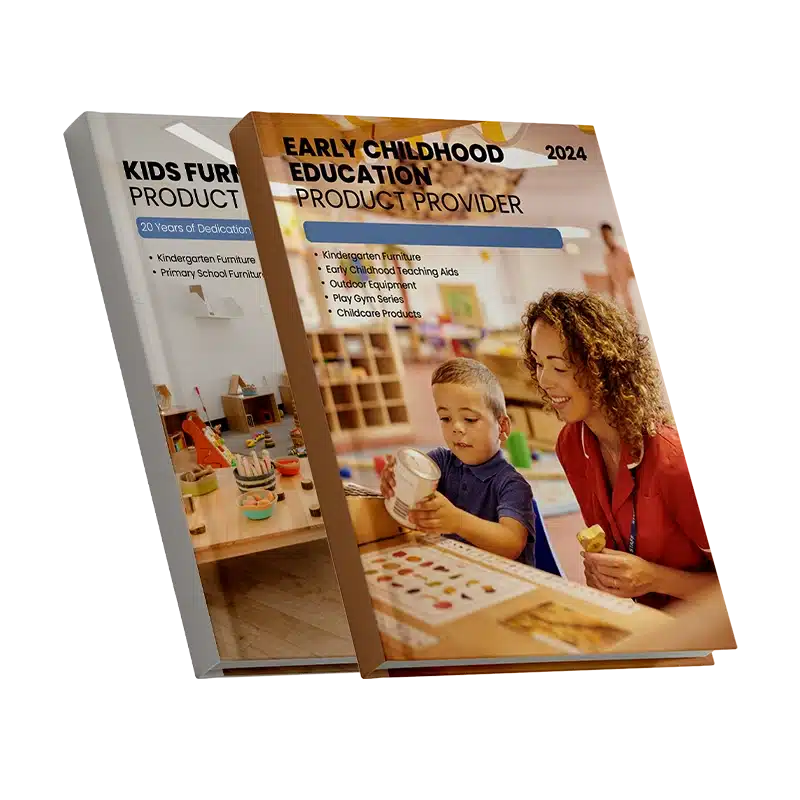
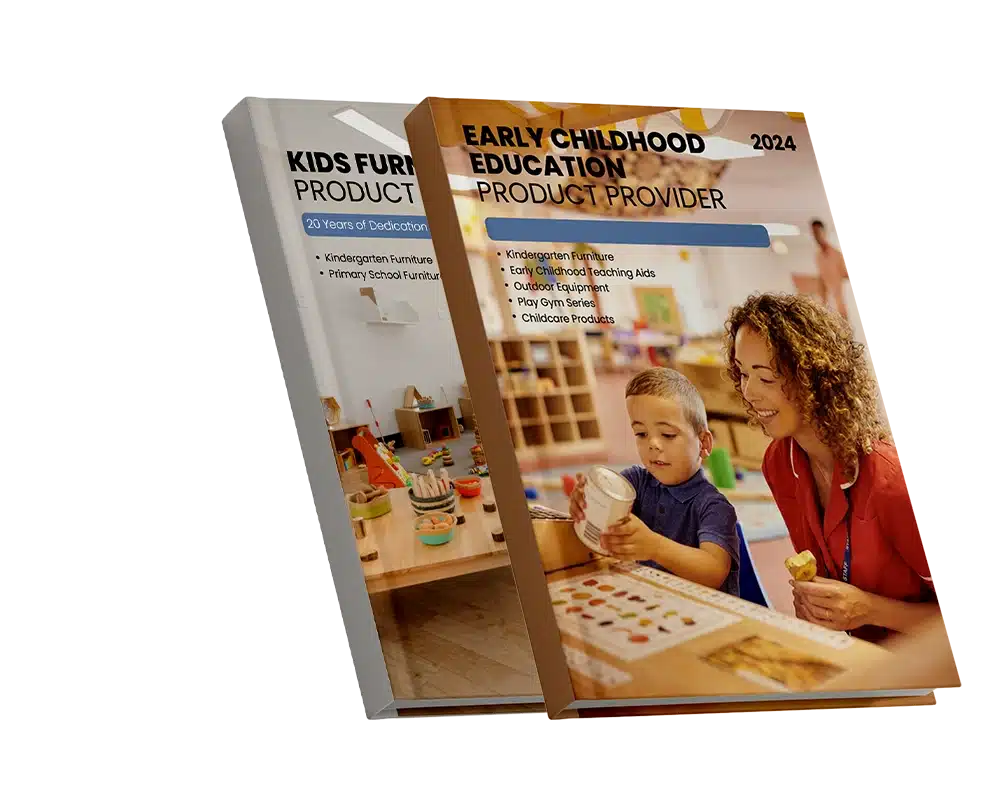
Montessori Biology Tools and Activities
| Tool/Material | Purpose | Example Activity | Learning Outcome |
|---|---|---|---|
| Three-Part Nomenclature Cards | Reinforce biological vocabulary and classification | Matching cards for parts of a plant (e.g., “leaf,” “stem”) with corresponding images and descriptions | Build vocabulary and understanding of biological structures |
| Botany Cabinet | Explore shapes and types of leaves | Children match wooden leaf cutouts to leaves collected during nature walks | Recognize and classify leaf shapes |
| Microscope | Introduce children to microscopic life | Examine pond water to identify microorganisms like algae and protozoa | Develop observation skills and curiosity about the unseen world |
| Animal Puzzle | Learn anatomy of different animals | Assemble a puzzle of a frog, identifying organs such as the heart, lungs, and stomach | Understand basic animal anatomy and its functions |
| Lifecycle Models | Visualize stages of development in living organisms | Use plastic models of the butterfly lifecycle (egg, larva, pupa, butterfly) to arrange stages in order | Understand the concept of growth and transformation in living things |
| Food Web Charts | Teach ecological relationships and interdependence | Create a food web using pictures of animals, plants, and decomposers | Grasp the balance of ecosystems and the role of each organism |
| Gardening Tools | Hands-on learning about plant growth and care | Plant beans in pots, water them daily, and observe germination | Learn responsibility and understand plant life cycles |
| Classification Charts | Provide visual aids for taxonomy | Use a vertebrate chart to classify animals into mammals, birds, reptiles, amphibians, and fish | Enhance knowledge of biological classification |
| Timeline of Life | Explore evolution and the history of life on Earth | Walk along a large timeline showing key milestones, like the emergence of dinosaurs and mammals | Understand the progression of life and evolutionary changes |
| Outdoor Exploration Kit | Foster connection with nature through direct observation | Use binoculars and field guides to identify birds during a nature walk | Develop identification skills and an appreciation for local ecosystems |
| Decomposition Box | Study the role of microorganisms in recycling organic matter | Place organic waste in a compost box and observe how it breaks down over time | Understand decomposition and its importance to nutrient cycles |
| Seed Sorting Trays | Teach children to recognize and categorize seeds | Sort seeds by size, shape, or type using sorting trays | Develop fine motor skills and an understanding of seed diversity |
Age-Based Montessori Biology Education
Montessori biology education is carefully tailored to the developmental needs of children at different ages. This age-based approach ensures that children can explore biological concepts in ways that resonate with their curiosity and capacity for understanding.
1. Early Childhood (3–6 years): Sensory Training and Basic Life Concepts
For children aged 3 to 6, Montessori biology introduces the natural world through hands-on, sensory activities that spark curiosity.
- Focus on Sensory Exploration: At this stage, children are encouraged to use their senses to observe and understand life around them. Activities like touching different leaves, smelling flowers, or sorting seeds help them connect with the living world.
- Practical Life Integration: Montessori biology materials, such as three-part cards showing parts of a plant, are used to build vocabulary and basic classification skills. Simple activities like watering plants or observing insects provide real-world connections.
2. Elementary (6–12 years): In-Depth Exploration and Classification
Between the ages of 6 and 12, children are ready to dive deeper into biology, exploring the diversity and complexity of life.
- Introduction to Taxonomy: Children learn to classify living organisms such as mammals, reptiles, and amphibians. Montessori tools like classification charts and nomenclature cards make this learning interactive.
- Ecosystems and Interdependence: Lessons focus on relationships within ecosystems, such as food chains and the water cycle. For example, students may create a food web diagram to visualize how plants, animals, and decomposers interact.
3. Adolescents (12+ years): Research and Independent Experiments
For adolescents, Montessori biology emphasizes independent learning and research. This prepares them for more complex scientific inquiry and real-world applications.
- Self-Directed Research: Students are encouraged to pursue topics that interest them, such as environmental conservation or animal behavior. They may design experiments or create reports on their findings.
- Critical Thinking and Application: Projects like analyzing soil quality or studying the effects of pollution help adolescents connect biological concepts to real-world challenges.



Benefits of Montessori Biology
Montessori biology offers a range of benefits that go beyond traditional science education. By focusing on hands-on learning and observation, it fosters skills and attitudes that are essential for lifelong learning.
1. Developing Critical Thinking and Observation Skills
Montessori biology encourages children to ask questions, analyze patterns, and make connections. For instance, a child observing the life cycle of a butterfly learns to document changes, draw conclusions, and ask why specific adaptations occur. This nurtures critical thinking and scientific inquiry.
2. Encouraging Curiosity and Independent Learning
Montessori biology creates an environment where children are free to explore their interests. Whether it’s investigating how plants grow or studying animal behavior, this approach inspires independent learning. By fostering curiosity, Montessori biology prepares children to become lifelong learners with a passion for discovery.
3. Fostering a Love for Nature and Environmental Responsibility
One of the key goals of Montessori biology is to instill a sense of respect for nature. By engaging in activities like gardening or observing local ecosystems, children develop a deeper appreciation for the environment. This fosters a lifelong commitment to sustainability and environmental stewardship.
Integrating Montessori Biology into Modern Education and Everyday Life
Montessori Biology in Modern Education
In today’s educational landscape, Montessori biology has seamlessly integrated into modern teaching approaches, offering a hands-on and holistic way to teach life sciences. Montessori biology continues to evolve and remain relevant by adapting to new methodologies.
1. Blending Montessori Biology with STEM Education
Montessori biology’s emphasis on observation, experimentation, and critical thinking naturally aligns with STEM (Science, Technology, Engineering, and Mathematics) education.
- Project-Based Learning: Students engage in interdisciplinary projects, such as building terrariums to study ecosystems, which combine engineering and biology.
- Technology Integration: Digital tools like virtual microscopes and biology apps enhance traditional Montessori methods, enabling children to explore concepts like cell structures or plant growth in more detail.
- Real-World Applications: For example, studying the carbon cycle could be paired with climate change discussions, encouraging students to apply scientific knowledge to solve global problems.
2. Applying Montessori Biology Principles in Traditional Schools
Traditional schools are increasingly adopting Montessori-inspired biology methods to enrich their curricula.
- Active Learning Environments: Schools use materials such as biology nomenclature cards or animal puzzles to make biology interactive and engaging.
- Field Studies and Experiments: Teachers organize activities like nature walks or experiments with soil samples to introduce Montessori’s hands-on approach to science.
- Inclusivity in Learning: Montessori biology methods cater to diverse learning styles, offering visual, tactile, and experiential elements that benefit all students.
Schools create a dynamic learning environment that fosters curiosity and scientific inquiry by integrating Montessori biology principles into modern education.


Implementing Montessori Biology at Home
Montessori biology is not limited to classrooms—it can be effectively implemented at home with simple tools and activities. Families can create an environment that encourages children to explore the natural world and develop an understanding of biology in their everyday lives.
1. Simple Activities for Families
Families can incorporate Montessori biology through everyday activities that are fun and educational.
- Gardening Together: Planting seeds, watering plants, and observing their growth teaches children about plant life cycles.
- Nature Walks: Take children to local parks or forests to observe plants, insects, and animals in their natural habitats. Please encourage them to collect leaves or draw what they see.
- DIY Science Projects: Create a mini-compost bin to teach children about decomposition and nutrient recycling, or study pond water with a simple microscope to discover microorganisms.
2. Creating a Biology-Friendly Environment
A biology-friendly home environment encourages exploration and observation.
- Incorporating Natural Elements: Set up a small indoor garden, maintain a fish tank, or create a terrarium to bring biology lessons into the home.
- Organized Learning Spaces: Use shelves to store Montessori biology materials, such as classification cards, magnifying glasses, and field guides, so that children can access them independently.
3. Recommendations for Montessori Toolkits
Parents can invest in Montessori-inspired toolkits to support hands-on learning.
- Suggested Tools:
- Microscope sets for exploring cells and microorganisms.
- Biology puzzles (e.g., parts of a flower, human anatomy).
- Nomenclature cards for plant and animal classification.
- Customizable Kits: Families can create their kits by including jars for collecting soil or leaves, sketchpads for journaling, and gardening supplies.
By implementing Montessori biology at home, parents can provide children with meaningful, real-world experiences that foster a love for nature and curiosity about life.

Distinctions Between the Two Sections
| Aspect | Montessori Biology in Modern Education | Implementing Montessori Biology at Home |
|---|---|---|
| Focus | Integrating Montessori principles into formal education systems like STEM and traditional schools. | Bringing Montessori biology concepts into daily family routines and activities. |
| Environment | Structured classroom settings with access to specialized tools and group activities. | Flexible, informal home settings tailored to family needs and interests. |
| Activities | Project-based learning (e.g., building terrariums, studying food chains) and field studies. | Gardening, nature walks, DIY experiments like composting or observing pond water. |
| Materials | Comprehensive tools such as nomenclature cards, classification charts, and digital microscopes. | Simple materials like magnifying glasses, gardening tools, and sketchpads. |
| Learning Goals | Developing critical thinking and scientific inquiry in a collaborative setting. | Encouraging curiosity, independent exploration, and connection to nature. |
| Audience | Primarily groups of students in schools or educational institutions. | Individual children or families in a home environment. |
| Flexibility | Curriculum-based with predefined learning objectives and timelines. | Highly adaptable to a child’s pace and interests. |
Montessori Biology and Sustainability
Montessori biology is pivotal in fostering environmental awareness and encouraging sustainable practices from a young age. Children understand their responsibility toward the planet and its ecosystems through hands-on activities and real-world applications.
1. Building Environmental Awareness
Montessori biology emphasizes the interconnectedness of life, helping children understand how their actions impact the environment.
- Lessons on Conservation: Children learn the importance of reducing waste, conserving water, and protecting biodiversity through practical activities like recycling projects or nature walks.
- Observation-Based Learning: Observing ecosystems such as gardens or ponds teaches children how plants, animals, and microorganisms work together to maintain balance.
For instance, children may study a small garden’s ecosystem and observe how pollinators, like bees, contribute to plant reproduction, fostering a sense of responsibility for preserving habitats.
2. Addressing Climate Change Through Biology Lessons
Montessori biology introduces complex topics like climate change in age-appropriate ways, helping children grasp the challenges and solutions.
- Learning About Natural Cycles: Lessons on the water cycle, carbon cycle, and greenhouse gases connect children to more significant environmental issues.
- Practical Actions: Planting trees, creating compost, or reducing plastic use teach children tangible ways to mitigate climate change.
By connecting biology lessons to real-world issues, Montessori education empowers children to take action and understand their role in addressing global challenges.
3. Encouraging Participation in Conservation Projects
Montessori biology encourages children to participate in community projects that promote sustainability.
- Examples of Projects:
- Organizing local clean-ups to reduce litter and protect wildlife.
- Creating a school garden where children grow vegetables and learn about sustainable agriculture.
- Participating in tree-planting events to restore deforested areas.
These activities teach biological concepts and instill a sense of agency, showing children that even small actions can contribute to global conservation efforts.

Montessori biology offers a holistic and hands-on approach to understanding the natural world, nurturing children’s curiosity, critical thinking, and environmental responsibility. Montessori biology bridges the gap between theoretical knowledge and real-world application by focusing on core concepts such as taxonomy, ecosystems, and evolution, paired with tools like nomenclature cards, timelines, and outdoor activities.
In modern education, its integration with STEM methodologies and adaptability to homeschooling has expanded its impact, making it more relevant than ever. Furthermore, its emphasis on sustainability prepares children to tackle global challenges like climate change and biodiversity loss. Looking ahead, innovations such as biotechnology and digital tools ensure that Montessori biology will continue to evolve, empowering future generations to understand and protect our planet.
Whether implemented in classrooms or at home, Montessori biology provides children with the skills, knowledge, and passion needed to explore the interconnectedness of life and make meaningful contributions to the world. By investing in this timeless educational approach, we nurture young minds and cultivate a brighter, more sustainable future.



